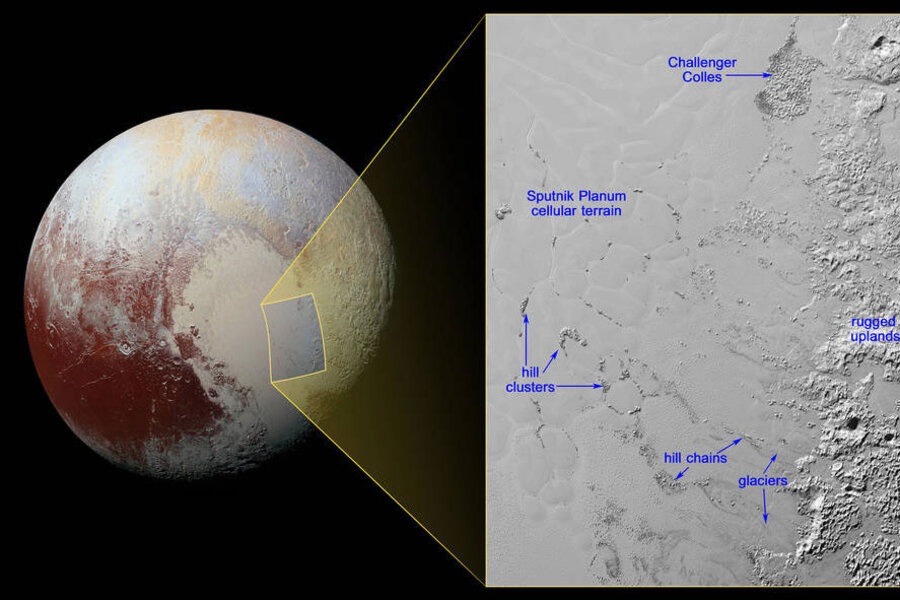Cosmic icebergs bob atop frozen nitrogen sea in Pluto's heart
Loading...
Scientist have spotted hills made of ice floating in a sea of frozen nitrogen in Pluto's "heart," one of the dwarf planet’s must distinct regions because of its shape.
NASA reports that the isolated hills may be fragments of water ice from the surrounding uplands. They’re spread across a vast plain of nitrogen-dominated ice known as Sputnik Planum, the heart’s western lobe, and are likely broken fragments of the mountains found on its far western edge.
What enables the hills to float is a simple matter of chemistry: water ice is less dense than nitrogen ice. A blog post on NASA’s website describes the hills as moving “like icebergs in Earth’s Arctic Ocean.”
“They are yet another example of Pluto’s fascinating and abundant geological activity,” it says.
Scientists hypothesize that nitrogen glaciers carried the hills into Sputnik Planum after they broke away from the rugged uplands. A newly released image show chains of the drifting hills along the flow paths of the glaciers, where they’ve formed clusters that reach up to 12 miles across.
At the northern end of the image, a feature informally named Challenger Colles – honoring the seven astronauts who died in the space shuttle Challenger explosion in 1986 – appears to be an especially large accumulation of these hills, measuring 814 square miles.
The center of Sputnik Planum features massive polygonal blocks of nitrogen ice. Scientists say thermal-convection processes, which in turn are driven by Pluto’s mysterious internal heat, probably produced these distinctive cell-like structures.
Images of the floating hills were taken by the New Horizons space probe during its July 14 flyby of Pluto. The $720 million spacecraft traveled for nearly 10 years and 3 billion miles to reach the dwarf planet and its moons, becoming the first mission to see them up close.







